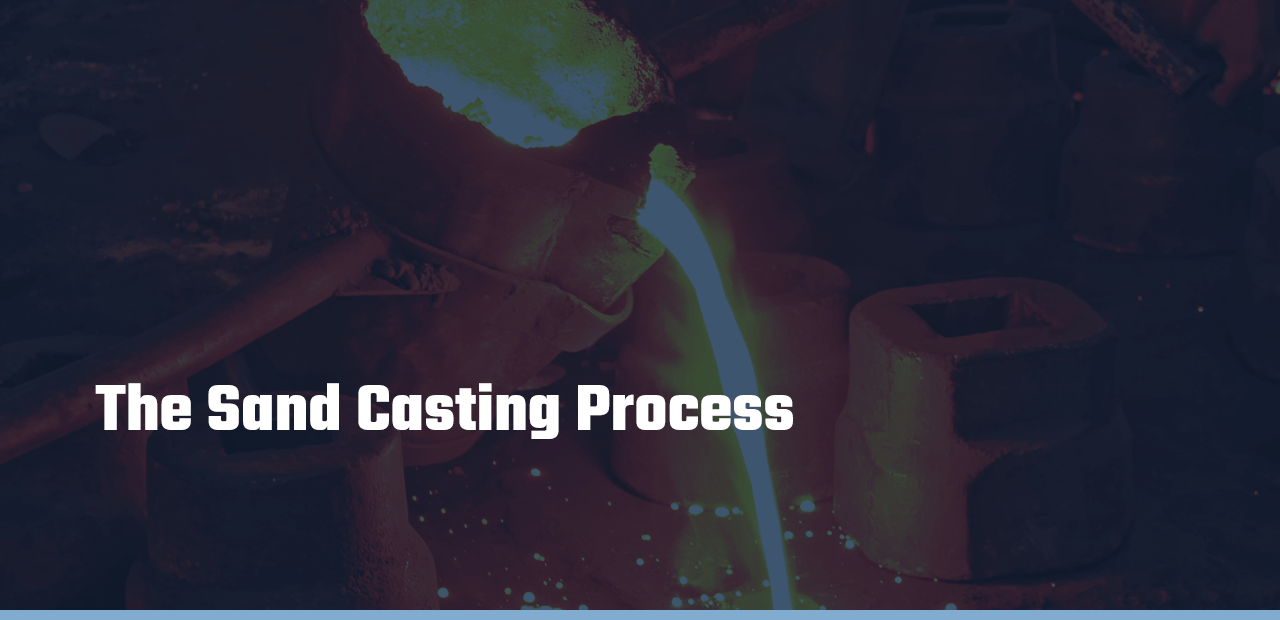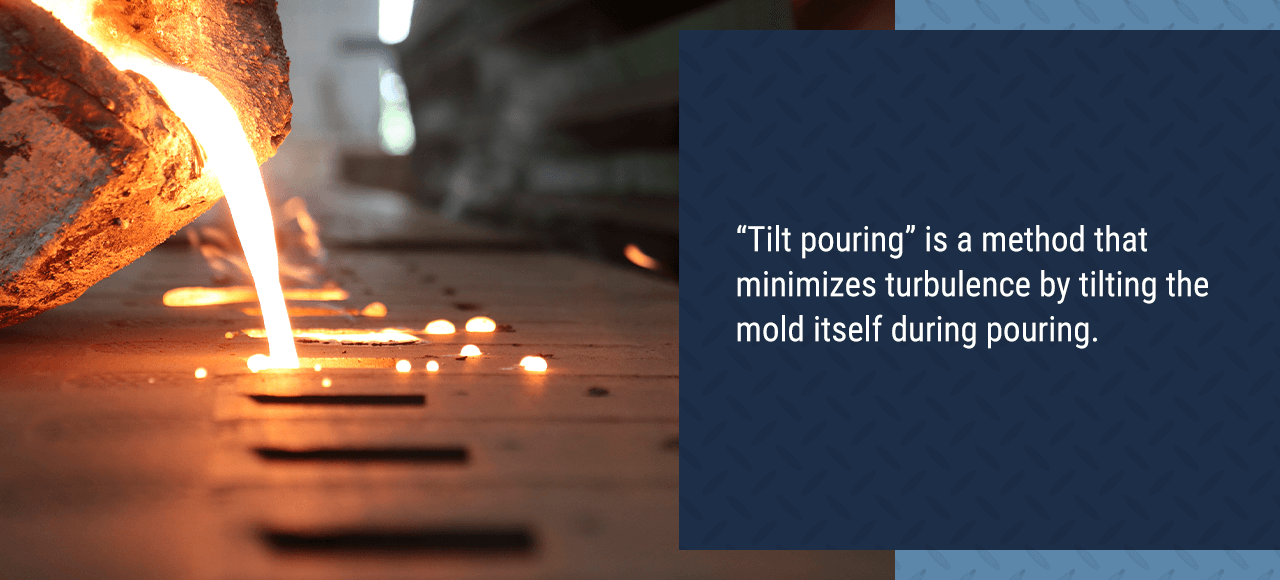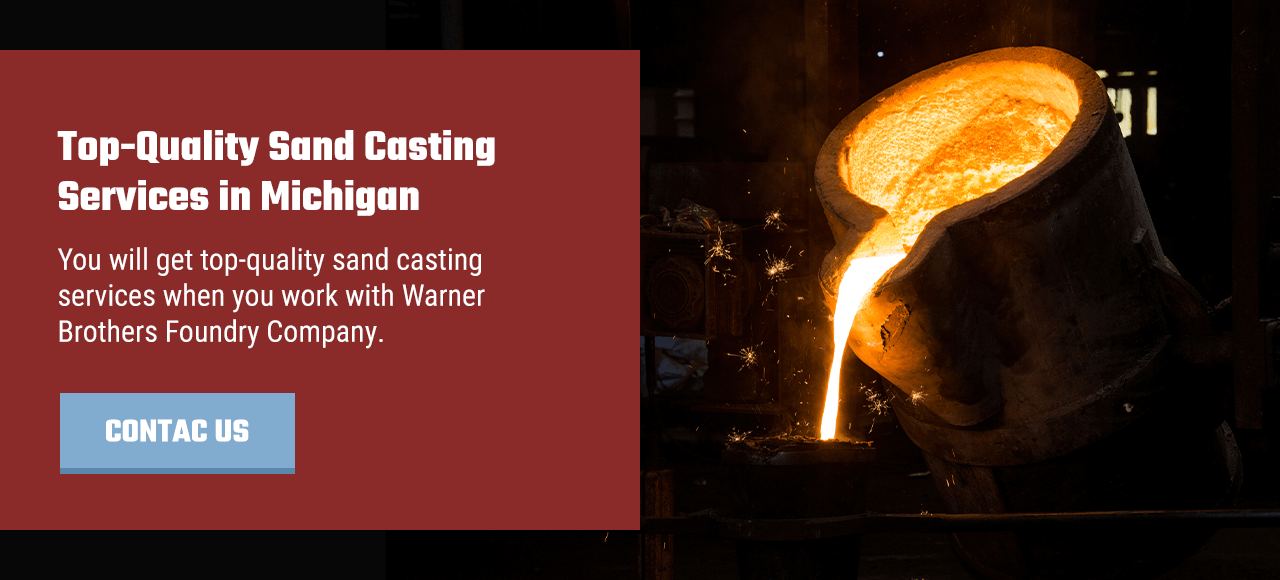Sand casting is the oldest known casting process and can be traced back to the Bronze Age in China in around 2000 B.C. This metal casting method is one of the most versatile and widely used approaches, common for large or complex parts and those on low to medium runs. Manufacturing products using sand casting can produce parts with almost any design. Specific products call for different casting or metalworking processes based on factors like need tolerances, volume, design intricacy, tooling availability and lead time. Sand casting can often meet these requirements.
This process involves a mold made of compressed or compacted sand, imbued with additional material that allows it to maintain its shape. The metal is then poured into that cavity, cooled and released. But there’s more to it than that.
Here are the five basic sand casting process steps.
1. Creating the Pattern
The first step in the sand casting process is to create the pattern. Typical materials used include wood, plaster, plastic and metal, but if the pattern calls for specific properties, other materials may be used instead. The number of castings and the required specifications of the finished casting determine which material to select for creating the pattern.
Since the pattern will be a replica of the part’s exterior, it should have dimensional allocation for finishing tasks and shrinkage. Casts that are hollow on the inside typically call for additional patterns that are used as cores. Cores leave cavities or contours in the finished product and are usually made of a material that can collapse or be easily removed after casting.
2.Building the Mold
The second step in sand casting is to create the mold using a special type of sand with refractory properties. Refractory materials are those that can withstand extremely high temperatures. These characteristics allow the sand to dry out for easy part removal and ensure the mold material isn’t affected by the heat of the molten metal.
There are many sand materials to choose from, and you’ll often find additional substances such as clay or other bonding agents in the sand. They add strength so the sand can withstand the turbulence and weight of the pouring process and maintain its shape. The material should also resist metal reactions and be brittle enough to break away from the cooled metal after the casting process.
At Warner Brothers Foundry Company, we use a material called no-bake sand. No-bake sand molding uses a chemical binder to hold the sand together rather than heat. No-bake options can offer more complex castings.
To create the mold, the material — in this case, sand — is stabilized, either at high temperatures or with binders, and formed around the pattern. You can also create the mold by machining a cavity for your shape into a sand block. The method is common in the product development phase or for parts with infrequent usage. It allows you to make design changes faster and eliminate pattern storage and maintenance.
Usually, these molds consist of two parts called a cope and a drag, which refer to the top and bottom halves, respectively. Gating systems are also included to help the metal flow properly. They include several channels that create a smooth, complete fill in the pouring stage. Once the sand sets, the cope and drag are separated, and the pattern is removed. Then, the two halves get a refractory coating that improves the surface finish and helps keep the mold safe from turbulence during metal pouring.
3. Pouring the Metal/Alloy
The third step is to pour the metal or alloy into the mold. This is the most dangerous step to sand casting, so the caster needs to follow all of the adequate safety precautions, such as wearing protective equipment and removing any hazards. The molten metal is poured slowly and carefully into the static mold.
“Tilt pouring” is a method that minimizes turbulence by tilting the mold itself during pouring. It helps the metal move more smoothly into the casting. By reducing turbulence, we can reduce the chance of casting defects or oxide formation. The mold must also be filled up in one pour to ensure the metal doesn’t cool at different rates and cause inconsistencies to the object.
The process can accommodate almost any alloy. If the alloy is especially reactive with oxygen, the caster may need to employ argon shielding, which keeps oxygen away from the liquid metal.
4. Removing the Part Through Shakeout
The fourth step to sand casting is the shakeout process, in which the sand gets broken down and removed. The part must completely freeze before unmolding. If it’s removed too soon, a chemical reaction may occur between the surface of the metal and the cool air.
The shakeout is typically done by placing the mold on an agitation or vibration table that shakes vigorously. The shaking allows the sand to drop from the casting and sift through holes in the table. Frequently, the sand falls into a box or onto a conveyor, to be recaptured and reused in future molds.
Investment castings, which use harder casing materials, might use ceramic sand, so this type of mold would need to use strong water jets or be cracked open to release the part.
5.Finishing and Cleaning
Lastly, there are a few finishing touches to perform. The caster removes runners, gates and liners from the casting and starts post-processing work, like sandblasting or grinding, if it’s needed. These steps can remove residual sand left on the part and remove extra metal. Meeting certain final dimensions or tolerances will require more detailed machining. Heat treating the material may also be done to improve dimensional stability or other characteristics.
Some casters will also perform non-destructive testing at this point. This is a method of quality testing that doesn’t require breaking apart or otherwise destroying the final product. These tests might include radiographic, magnetic particle, visual and liquid penetration tests. Casters will also verify dimensions and alloy test results, among other checks before sending the part off to its recipient.
Top-Quality Sand Casting Services in Michigan
The versatile, direct and cost-effective sand casting service is an ideal option for producing metal components in foundries. Getting top-notch service is essential to your success, regardless of the market you’re in.
You will get top-quality sand casting services when you work with Warner Brothers Foundry Company. We will ultimately exceed your expectations by helping you throughout the whole process. We use 319, A356, C355, 535 and 713 alloys in our sand casting foundry. We will help you choose the best alloy for your project.
You can keep your production on schedule if you work with us because we have quick turnarounds. For over 65 years, Warner Brothers Foundry Company has been family-owned and operated. We create quality parts with a quick turnaround inside our sand foundry in the Detroit, Michigan, area. We can use a variety of sand casting techniques, including no-bake sand molding and aluminum sand castings.
Contact us online or give us a call at 586-371-8244 to request a quote or learn more about our sand casting service.




